Alba Iulia is a city with a high degree of national importance, having hosted a great number of historical events. Also known as “The Other Capital”, this is where the document which recognised the union between Transylvania and Romania was signed on December 1, 1918. It is here that the “Great Union” took place, the unanimous desideratum of the country’s inhabitants and the motivation behind the Romanians’ political and military actions. In addition to the rich historical baggage, Alba Iulia delights its tourists with the architectural jewels it hosts.
Alba Iulia is one of the first settlements in the country that, during the Roman occupation, carried the name of “Apulum”. During that period, it was the biggest economic and military centre in the area. The Tatar invasions of 1241 destroyed the city, but it was rebuilt when the city became the capital of the Principality of Transylvania between 1542 and 1690. Later, the city becomes a tributary of the Ottoman Empire.
Alba Iulia was the first capital of the three Romanian Provinces (Wallachia, Transylvania and Moldova), rank granted by Michael the Brave (Mihai Viteazu) who laid the foundations of an ideal for which Romanians fought over time. It is here that the Great National Assembly, which was the basis for the realisation of the unitary state, took place on December 1, 1918. This was the moment when the action started three centuries before by Michael the Brave materialised.
In 1928, a general assembly was organised in Alba where over 100,000 citizens were chanting against the government. So, the city has, over time, witnessed effervescent political, historical and social events of hardship.
The city is situated in the central-Western part of the country and is a municipality in the Alba County. The city is situated along the middle course of the Mureș river in the centre of the Transylvanian basin. The surrounding area is made up of three geographical units: the Apuseni Mountains (in the North-West), the Transylvanian Alps (in the South) and the Transylvanian Basin (in the East). The neighbouring counties are: Cluj – in the North, Mureș and Sibiu – in the East, Vâlcea – in the South and Arad and Hunedoara – in the West.
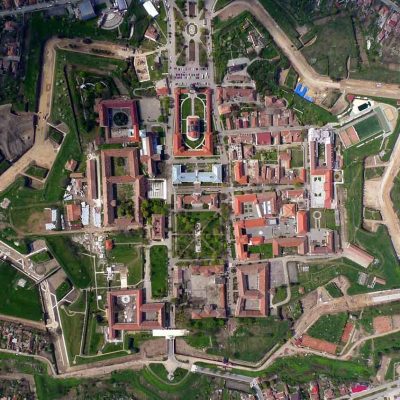
St. Michael’s Cathedral – located within the fortress, it represents a symbol of the Romanesque and Gothic architectural styles in Transylvania.
It is often compared to Notre-Dame Cathedral in Paris due to its age: over 1,000 years. Like many churches with a rich history, St. Michael’s Cathedral in Alba Iulia was built over several periods, with each stage replacing a smaller previous construction (other churches). It holds another record for Romania: being the longest, with a length of 93 meters.
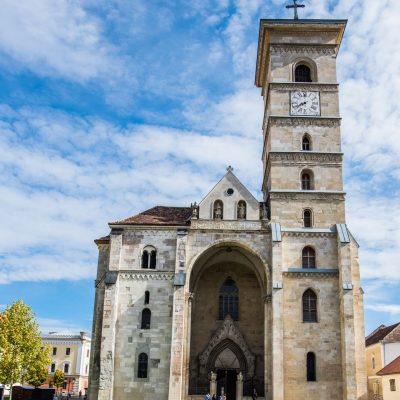
The Obelisk of Horea, Cloșca, and Crișan – is dedicated to the leaders of the 1784-1785 uprising, through which the grievances of the peasants in Transylvania regarding feudal oppression were expressed.
This historical monument is located facing Gate III, right where in 1784 Horea and Cloșca were imprisoned. The construction stands at a height of 28 meters and depicts the three martyrs sculpted in bas-relief, standing upright in front of the people and the injustices of that period.
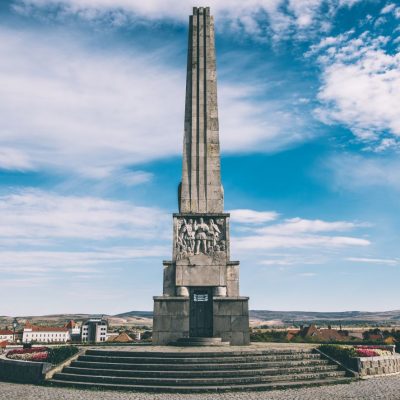
The Batthyaneum Library – is a branch of the National Library of Romania and houses over 50,000 books. It is an important cultural center both nationally and globally. Established on July 31, 1798, at the initiative of the Roman Catholic Bishop of Transylvania, Ignațiu Batthyany.
The main treasure of the library consists of over 18,000 bibliographic units (prints and manuscripts) dating from the 9th century onwards.
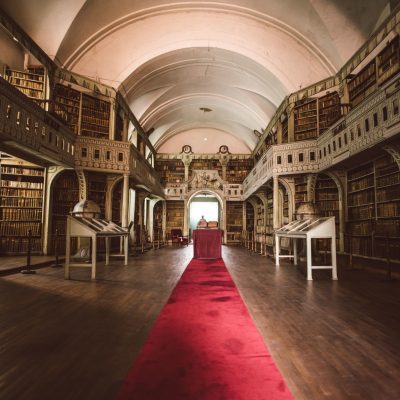
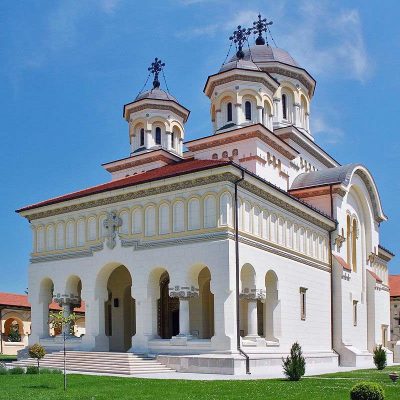
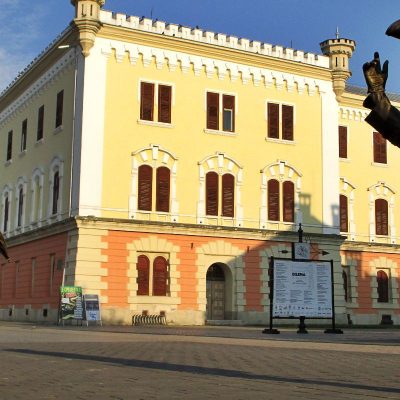
The nearest airport to Alba Iulia is located in Sibiu, 76 km away.
In case you want to travel from Bucharest to Alba Iulia by train, then you should know that the journey takes around 8 hours. From the train station in Alba Iulia you can find daily direct connections to the majority of the cities and places in the country.
If you are looking for a quicker alternative, you can opt to travel by bus or minibus. Here you can find all the information you might need: the location of the bus stations and the stops, the arrival and departure schedules and the destinations.
In case you want to go from Bucharest to Alba Iulia by car the recommended route is: (E81) Bucharest – Pitești – Râmnicu Vâlcea – Sibiu – Alba Iulia.
